A good plan helps K-12 schools keep focus on priorities
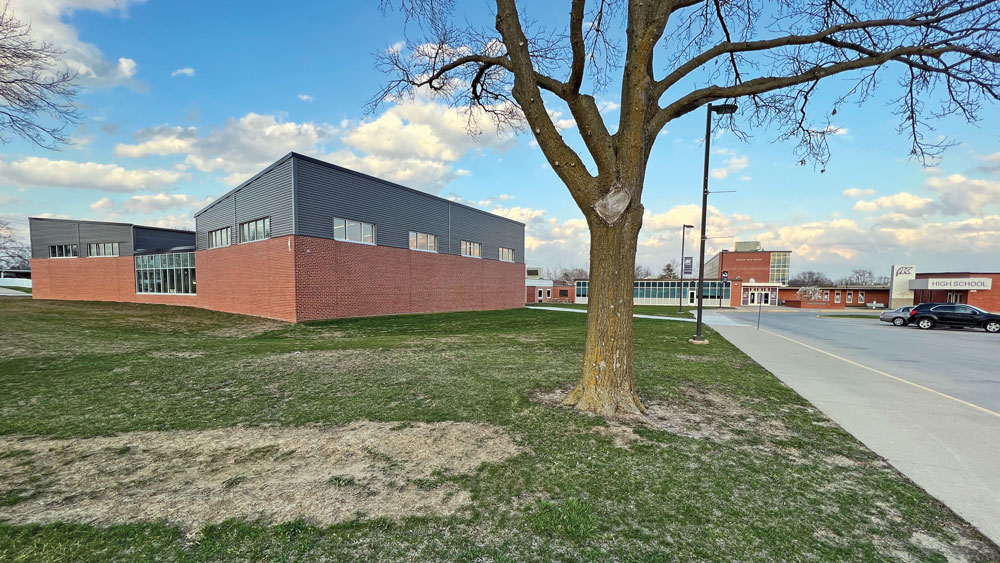 Although some of its project goals proved unaffordable, the Keokuk Community School District was able to tackle its highest-priority needs using sales tax and federal grant revenue. Keokuk High School gained a music addition (left) and secure entry and multipurpose room renovation (below right). The district also updated HVAC systems at Hawthorne Elementary School. Both projects addressed needs identified in the district’s master plan. (CANCO photo)
Although some of its project goals proved unaffordable, the Keokuk Community School District was able to tackle its highest-priority needs using sales tax and federal grant revenue. Keokuk High School gained a music addition (left) and secure entry and multipurpose room renovation (below right). The district also updated HVAC systems at Hawthorne Elementary School. Both projects addressed needs identified in the district’s master plan. (CANCO photo)
2 years, 4 months ago
When dollars don't add up to being able to do every desired building project, needs assessment and master planning is a guide to doing what's needed
By Craig T. Neises
Carl A. Nelson & Company
A facilities master plan, like the one completed in 2021 for the Keokuk Community School District, can be viewed as a roadmap for arriving at a desired destination. But such a comprehensive document also can be viewed as a guidebook, similar to what might be employed when planning a vacation. Used correctly, it helps keep the focus on priorities when there isn’t money enough to do everything.
For Keokuk CSD, a new school building for grades three to five, and improvements to the football stadium were desireable outcomes of planning. But when money fell short, the master plan kept district officials focused on their highest priorities: a space crunch and safety enhancements at the high school, and HVAC system upgrades at an aging elementary school.
Work in both areas flowed from the master plan, and resulted in checking off identified needs from the to-do list, or setting up the district to tackle others at a later date.
“It really helped us to narrow down our decisions as to what direction we wanted to go, or needed to go,” School Board member Angela Profeta said of the master plan, development of which was led by Carl A. Nelson & Company (CANCO), in cooperation with SVPA Architects, Inc.
At Keokuk High School, the most immediate need was elbow room. Students were eating lunch in the hallway because the cafeteria doubled as overflow space for the music department. An 8,000 square-foot addition provided rehearsal and practice rooms for the band and choir, along with better acoustics, and dedicated music storage and faculty offices while freeing up the entire cafeteria for its intended use. Renovation of the 4,000 square feet previously dedicated to the music program created a new secure main entrance to the school, as well as a multipurpose room for meetings and activities.
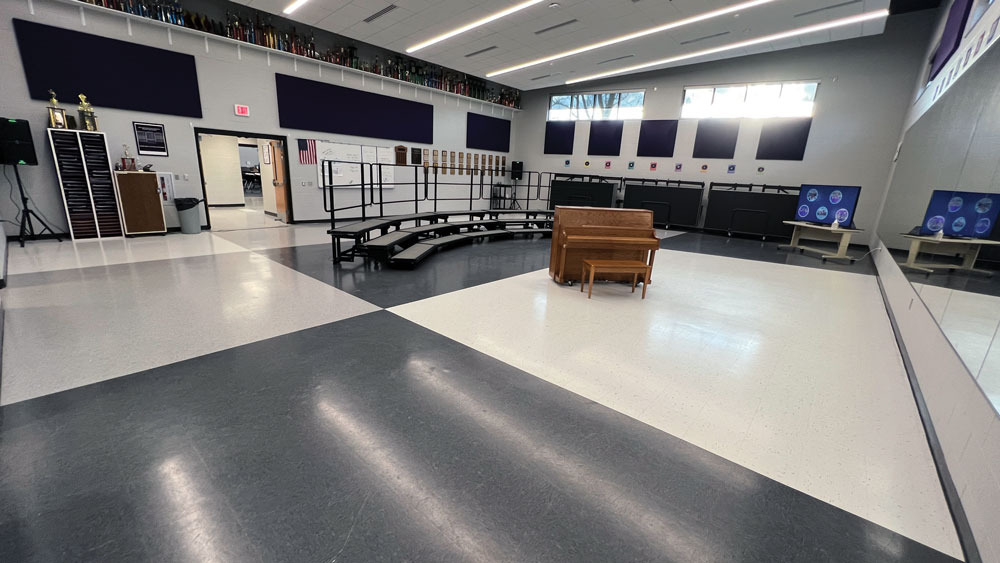
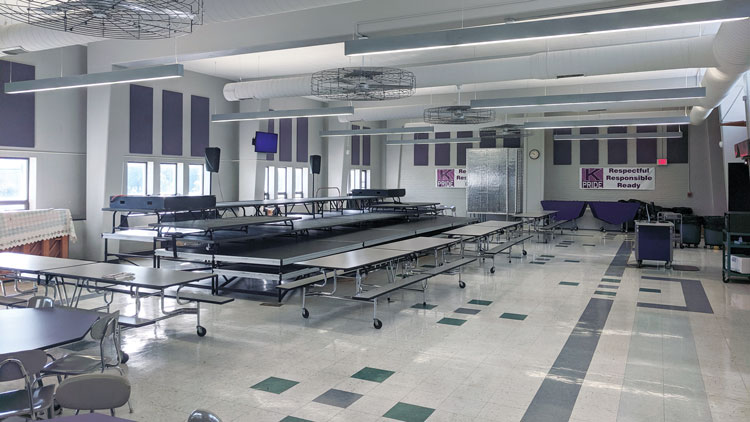
The completed choir room inside an 8,000 SF music addition at Keokuk High School is set up during an April open house with choir risers and a piano occupying the center of the space. A larger set of risers for show choir performances can be seen folded and against a wall. The show choir risers also appear in the a photo of the cafeteria taken in 2019, taking up space that now can be used for students to eat lunch. (CANCO photos)
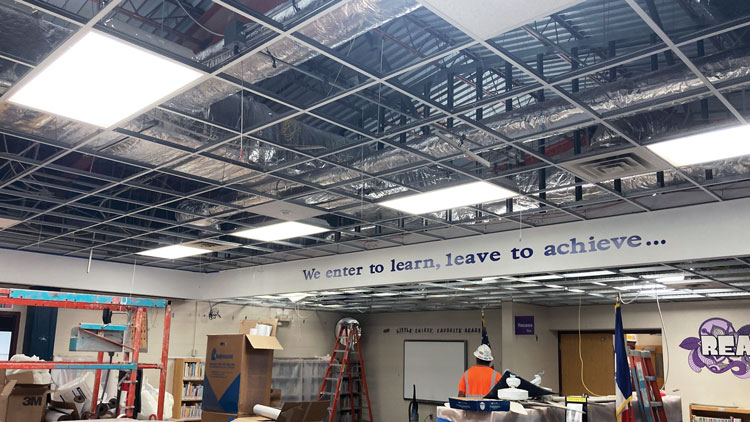
Upgrades to HVAC equipment is seen above the open drop ceiling inside the media center at Hawthorne Elementary School in Keokuk. Prior to completion of the air-quality improvement project funded by a federal grant, the building was a hodgepodge of heating, cooling and ventilation systems dating to the building’s 1957 origins, and additions built in the 1970s and 2000s. (CANCO photo by Cindy Larson)
At Hawthorne Elementary School, HVAC work touched nearly all of the building’s 62,500 SF, albeit mostly above ceilings. Built in 1957 and expanded in 1978, 2000 and 2011, the school was a patchwork of different heating, cooling and ventilation systems, and had no unified controls. Updates included a new chiller, two new boilers, and added or upgraded air-handlers and new ventilation systems in multiple rooms. Replacement of 21 condensers with a single chiller improved operating efficiency and reduced ongoing maintenance cost.
Combined construction cost for the projects was $6.62 million, paid for with a combination of Iowa sales tax revenue and a one-time federal ESSER grant for COVID-related air-quality improvements.
While a successful referendum in 2021 would have moved third-grade out of Hawthorne, the new HVAC system was designed to accommodate other master plan items, including future classroom and multipurpose room additions to the school.
Working in the role of Construction Manager Agent (CMa), CANCO transitioned from needs assessment and master planning to leading pre-construction and construction of both projects, which were built simultaneously in 2022. In that role, the CANCO project team developed budgets and schedules, performed constructability and value engineering review of the designs, prepared bid packages and managed the construction phase with full-time, on-site supervision.
For Profeta and fellow School Board member Bonnie Peevler, who were among board members who took part in facility committee meetings before and during the projects, working with a construction manager brought numerous benefits to the district that helped deliver success. One of those benefits was the CANCO project team’s ability to make recommendations that kept the projects on-schedule amid pandemic-driven supply chain issues for building materials and mechanical equipment.
For instance, due to lengthy lead times on the specified conventional steel joists for the high school addition, CANCO recommended during pre-construction switching to a precast hollow core roof system. That change helped keep the project on-time and within budget, and contributed to returning more than 90% of Owner contingency to the district while limiting change orders, including Owner-initiated changes, to less than 1% of construction cost.
At Hawthorne, Peevler said, the CANCO team’s knowledge of the supply chain allowed the district to get a jump on procurement of equipment and materials to ensure the project didn’t get stuck in limbo waiting for HVAC equipment to arrive. Since completion, Profeta said she has gotten reports from staff at the school that temperature control is better, and ventilation is much quieter.
“I’m really happy with the outcome,” she said, referring to both projects. “I think that everything worked out really well.”
Public reaction to the projects, especially at the high school, has been positive, Peevler said.
“I think, overall, things went as smoothly as they could go,” Peevler added. “You always know with construction, something’s going to happen. Something’s going to turn up. And I felt like they were addressed in a timely manner.”
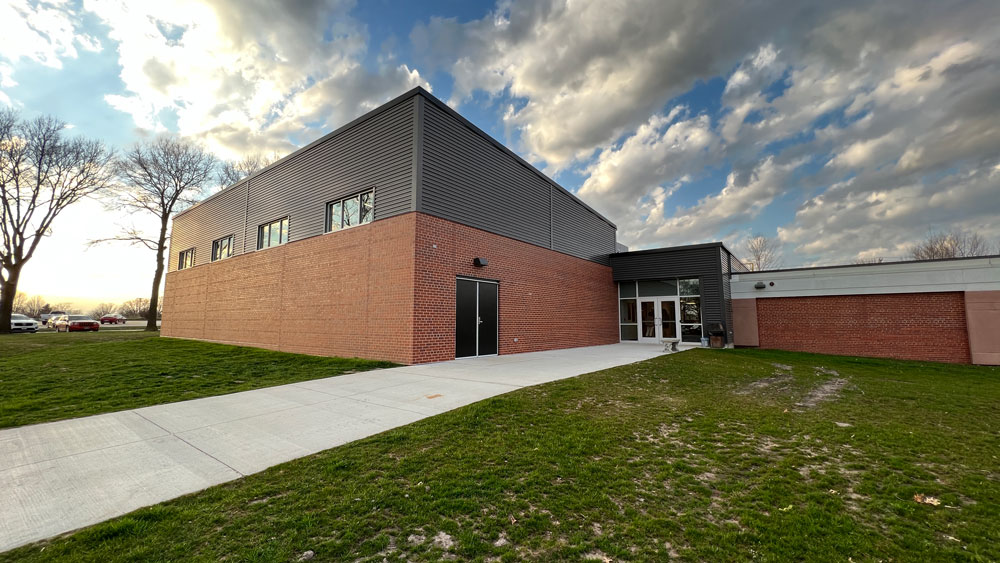
The music addition at Keokuk High School is an 8,000 SF space that includes rehearsal, practice, storage and office space for the band and choral music programs. (CANCO photo)
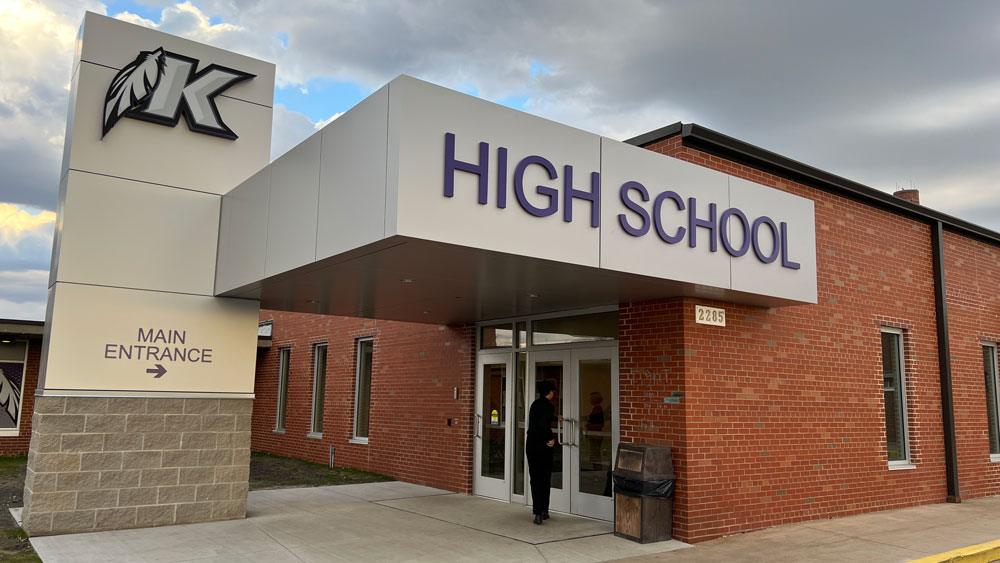
A student reaches for the door handle of the new secure entry at Keokuk High School. The new main entrance was built in space formerly occupied by the music program at the school. (CANCO photo)
As well as things ended, there were challenges that cropped up along the way. Peevler cited an instance of doors coming in the wrong size, omission of a bell and intercom from the addition “that somehow we all missed,” and other items that had to be dealt with. When those things came to light, Peevler said the CANCO team put in the effort to get them addressed promptly. Having a full-time supervisor on the projects, she said, no doubt also helped to get issues with contractors identified and addressed quickly.
“I just felt (the project superintendent) had the credibility that he could go have those difficult conversations, and knew how to handle them professionally and get results,” Peevler said.
At the outset of her involvement after joining the board in late 2021, Peevler said, she was concerned by the frequency of facility committee meetings held during the project, but soon came to understand the value of them. She and Profeta each said they liked being able to have the whole team present, including the district’s maintenance and leadership staff, to get updates, ask questions and air concerns.
“The construction manager would explain things to me that I had no idea about,” Peevler said, explaining that the kind of knowledge required to bid, schedule and build a complex building like a school is far outside the scope of most school boards and district maintenance staff. “That’s the expertise that we’re employing.”
Profeta, meanwhile, said she appreciated CANCO’s readiness with ideas regarding cost savings, the best ways to accomplish goals “and definitely going to bat for us.”
“You know, we weren’t just a school district that they were working for,” said Profeta, who went onto the School Board in 2020. “I really did feel like they actually cared about what they were doing. I understand, it’s their job. But there’s a difference between doing your job and really caring about the outcome of what you’re doing. And that was the sense that I got.”
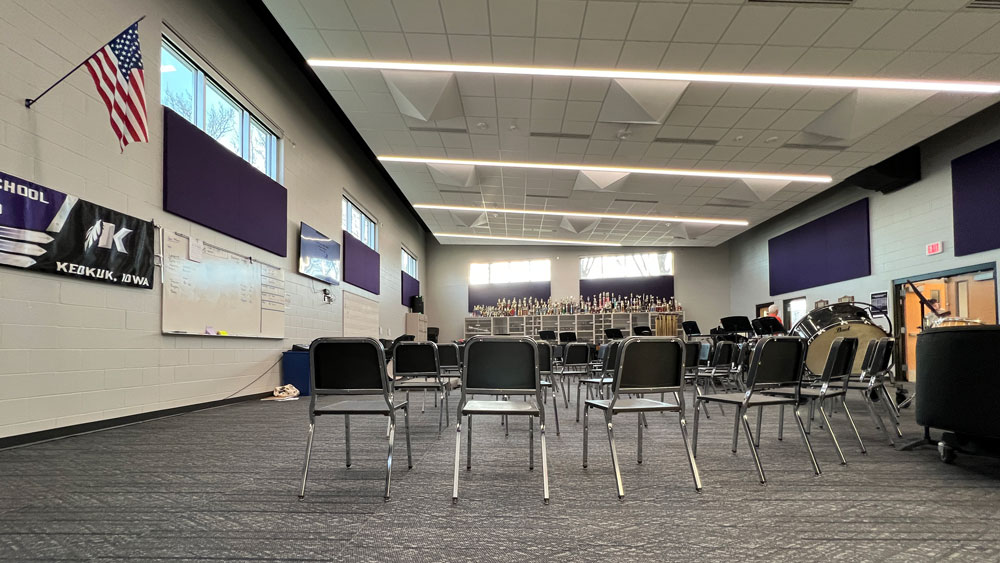
The band rehearsal room in the music addition at Keokuk High School. (CANCO photo)
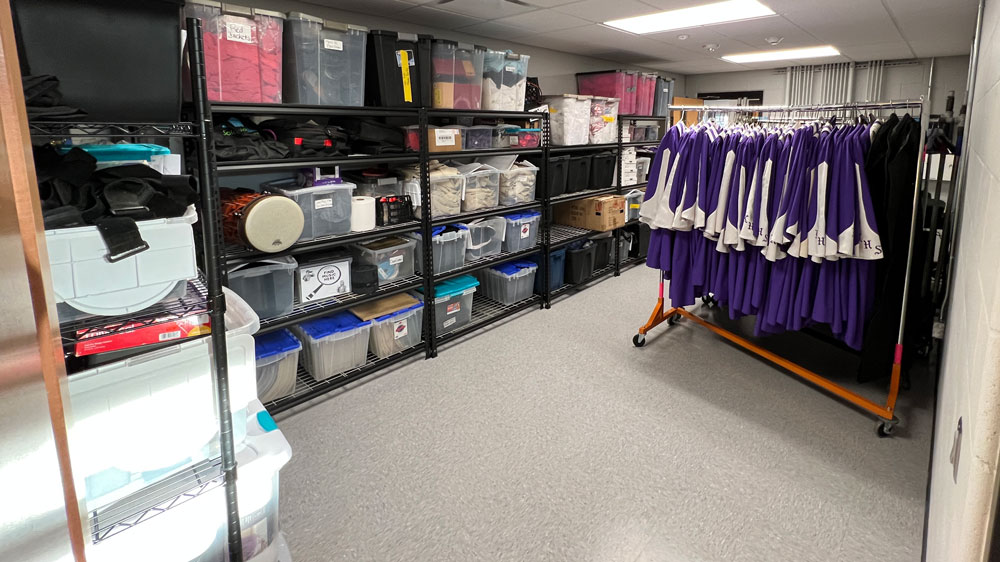
Choral program gear is stored neatly on racks and shelves in the music addition. (CANCO photo)
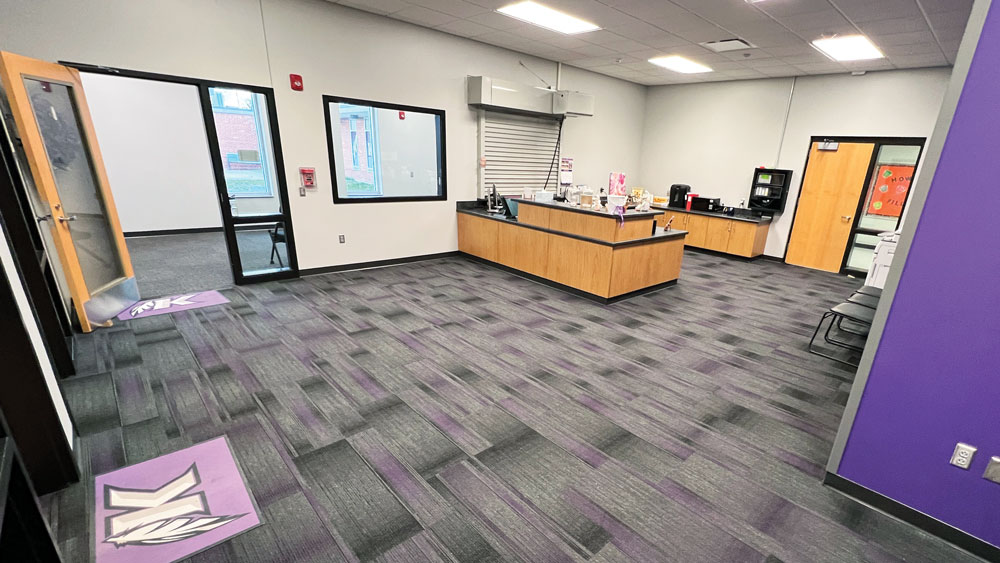
Office staff is able to keep an eye on traffic through the new secure entry at KHS. (CANCO photo)
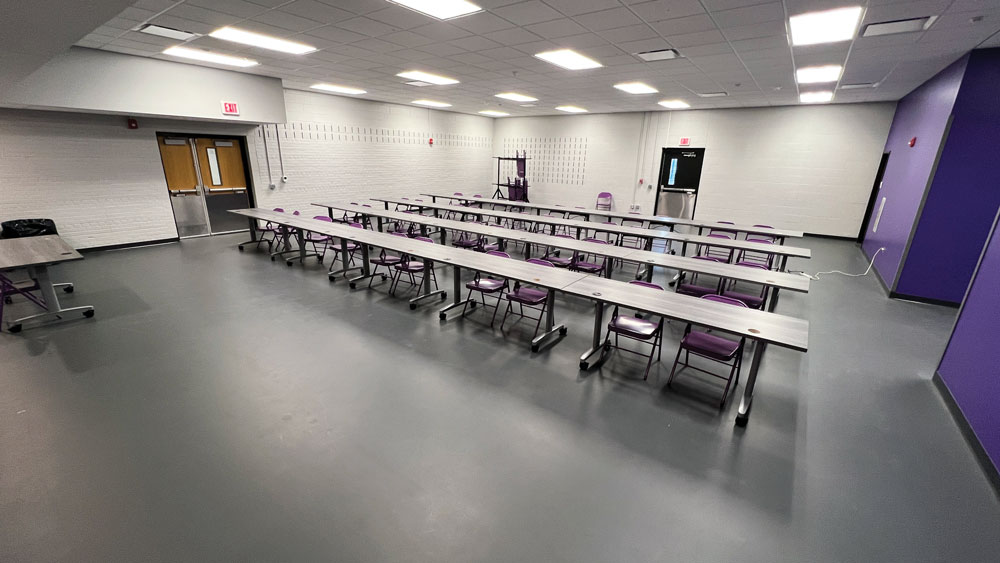
The multipurpose room in the former music program space at Keokuk High School. (CANCO photo)
As 2023 arrived and construction was completed, district officials started to turn their attention back to future efforts, and weighed whether to pursue a new master plan to help overcome voter opposition to the 2021 referendum. Ultimately, however, the School Board chose to stick with the plan they already had from CANCO and SVPA. Profeta said there was no reason to start over. Peevler said it is helpful to have solid data to point to when residents have questions about priorities.
“Things change over two or three years,” she said. “Something becomes more of a priority than before. But for me, it’s been very valuable to refer back.”
Results from the web and email survey conducted this spring by Keokuk CSD indicated continued support for improvements to Calvert Stadium, including the running track; and new interest in additional secure entrance upgrades at remaining buildings. When the district next pursues a significant building project based on those results and its master plan, Peevler said she is sold on employing a construction manager to be the board’s expert and advocate.
•••
Working as construction manager agent, Carl A. Nelson & Company has for many years provided professional services and trustworthy advice to school districts all over Iowa on building projects large and small, as well as leading needs assessment and master planning processes that have helped K-12 clients chart a path for the future. To learn more about our team’s capabilities, call Dan Culp at (319) 754-8415, or email canco@carlanelsonco.com.